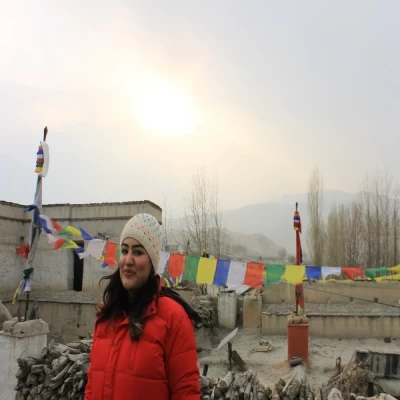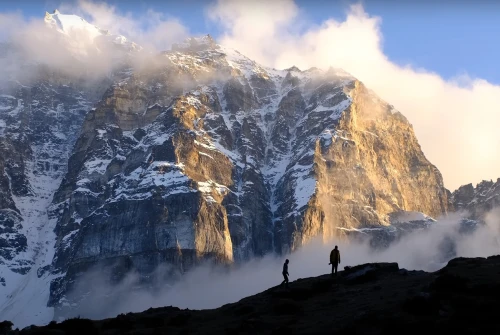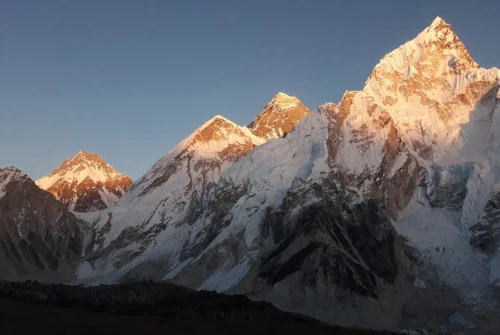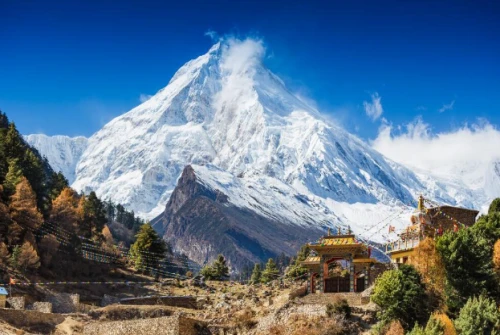The Kanchenjunga Base Camp trek is one of the most thrilling and lesser-known adventures in the Himalayas. Standing tall at 8,586 meters, Kanchenjunga is the third-highest mountain in the world. Trekking to its base camp is no walk in the park—it demands stamina, resilience, and detailed planning. Whether you are an experienced trekker or a passionate beginner, taking on this majestic journey with a guide can make all the difference between a strenuous survival test and an unforgettable adventure of a lifetime. Here’s why hiring a guide for the Kanchenjunga Base Camp Trek is not just a recommendation—it’s a necessity.
1. Expert Knowledge of the Terrain
Understanding the Challenging Routes
Kanchenjunga is notorious for its complex network of trails that weave through dense forests, high-altitude passes, rugged terrains, and remote valleys. Without deep local knowledge, it’s easy to lose your way or end up on treacherous paths. A professional guide has years—sometimes decades—of experience navigating these intricate routes. They understand how the landscape changes with the seasons and can predict potential obstacles before you even see them.
Imagine you are deep into the misty forests of Taplejung, with trails disappearing underfoot after a sudden rainstorm. A guide’s familiarity with alternative paths ensures that you never feel lost or unsafe. They adapt to changes swiftly, guiding you through the safest and most scenic paths to reach the base camp.
Knowing the Best Trails and Shortcuts
Guides not only keep you on track but also introduce you to hidden shortcuts and stunning viewpoints you might otherwise miss. They know when to bypass a hazardous section or detour towards a breathtaking viewpoint for a memorable break. Their intimate relationship with the land adds layers of richness to your trek that no map or GPS can replicate.
In a region as vast and wild as Kanchenjunga, where even technology often fails, a guide’s knowledge is your best map and compass.
2. Enhancing Safety During the Trek
Immediate Response to Emergencies
The Himalayas are unpredictable—weather shifts, altitude sickness, injuries, and wildlife encounters can turn your dream trek into a nightmare within minutes. A trained guide is your first line of defense in emergencies. They are equipped with first aid skills, emergency contacts, and contingency plans for evacuation if necessary.
Picture yourself battling severe altitude sickness at Selele La Pass, gasping for air with a splitting headache. While a solo trekker might panic or worsen their condition by making wrong decisions, a guide can assess your symptoms quickly, administer first aid, and arrange immediate evacuation if needed.
Proper Altitude Sickness Management
One of the most serious threats in high-altitude trekking is Acute Mountain Sickness (AMS). Many trekkers underestimate its severity until it’s too late. Guides know the warning signs by heart—loss of appetite, nausea, confusion, and extreme fatigue. They plan acclimatization days meticulously, adjust the trekking pace to your body's response, and ensure proper hydration and nutrition throughout the journey.
Having a guide is like having a personal mountain medic who can make life-saving decisions swiftly and effectively.
3. Cultural and Historical Insights
Exploring Remote Villages with Context
Trekking Kanchenjunga isn’t just about conquering heights—it’s about connecting with the centuries-old cultures that have flourished here. From the Limbu and Rai communities to Tibetan Buddhist enclaves, the region is a tapestry of traditions, myths, and rituals.
Without a guide, you might pass by ancient monasteries, sacred rocks, or village festivals without understanding their significance. A good guide acts as a cultural interpreter, sharing stories about the local history, spiritual practices, and the importance of landmarks you encounter along the trail.
Imagine sipping hot butter tea in a monastery at Ghunsa while your guide explains the symbolism of the murals around you—that’s an experience you’ll never forget.
Learning Local Traditions and Folklore
Guides often belong to local communities or have spent years integrating with them. They narrate local legends, teach you traditional greetings, and even introduce you to village elders. This not only enhances your experience but also shows respect for the communities that graciously host trekkers in their sacred lands.
Instead of just being a tourist, you become a welcomed guest, gaining deeper appreciation and fostering genuine human connections.
4. Language Barriers and Communication Ease
Bridging the Gap Between Trekkers and Locals
Kanchenjunga lies in one of Nepal’s most remote regions, where English is not widely spoken. While you might manage basic exchanges, important conversations about lodging, food preferences, trail conditions, or emergencies can get lost in translation.
A bilingual guide ensures smooth communication with lodge owners, porters, locals, and authorities. They negotiate better deals, handle unexpected changes, and make sure your needs are understood without misunderstandings.
Would you really want to haggle over a warm meal or a safe bed after a 10-hour hike in freezing temperatures? A guide eliminates such stresses, letting you focus purely on the experience.
Negotiating Logistics with Local Authorities
Permits and checkpoint regulations are strictly enforced in the Kanchenjunga Conservation Area. Your guide deals with local officials at police checkpoints, conservation posts, and village councils on your behalf, ensuring hassle-free travel and allowing you to enjoy the journey uninterrupted.
5. Logistical Support and Problem-Solving
Managing Permits and Paperwork
The Kanchenjunga region requires multiple permits, including the Kanchenjunga Conservation Area Permit (KCAP) and Restricted Area Permit (RAP). Navigating Nepal’s permit bureaucracy can be confusing and time-consuming, especially if you’re unfamiliar with local offices and requirements.
Hiring a guide means all paperwork is handled efficiently. Before you even land in Nepal, a guide-organized trek ensures that every permit is secured, every form filled, and every document ready.
Handling Unexpected Situations Smoothly
What if a bridge collapses after a landslide? What if the only lodge in a village is full? What if a sudden illness strikes in the middle of nowhere? A guide’s ability to problem-solve quickly, tap into local networks, and find solutions is priceless.
Their experience, calmness under pressure, and local connections can turn potential disasters into mere bumps in the road.
6. Boosting Your Confidence and Motivation
Encouragement on Tough Days
Trekking to Kanchenjunga Base Camp isn’t just physically demanding—it’s a mental battle too. Some days, the trails seem endless, the air gets thinner, and your body screams to quit. That’s where a guide’s role transcends logistics and safety, they become your personal coach.
Imagine grinding your way up a steep climb toward Sele Le Pass, your energy drained, legs heavy. A seasoned guide notices your struggle, walks beside you, cracks a joke, shares a success story from a past trekker, or simply reminds you how close you are to your goal. That morale boost can make a massive difference.
Guides are masters at reading your body language and energy levels. They suggest taking timely breaks, modifying the pace, or even singing local folk songs to lift your spirits. Having someone constantly reminding you, “You’ve got this!” can transform the way you perceive obstacles, turning despair into determination.
Keeping the Group Spirit Alive
If you're trekking in a group, the guide becomes the glue holding everyone together. They mediate tensions, encourage teamwork, and ensure that the experience remains positive for all members. A motivated team covers more ground with higher spirits, creating not just a trek but a shared journey you’ll talk about for years to come.
Good guides foster a sense of camaraderie that makes you feel part of a mini-family in the middle of the majestic Himalayas.
7. Access to Hidden Gems
Visiting Secret Spots Only Guides Know
Beyond the "official" trekking routes lies a world of hidden marvels: waterfalls cascading into secret valleys, ancient caves worshipped by monks, secluded viewpoints with unobstructed views of Kanchenjunga's icy grandeur.
Local guides know where these treasures are hidden. They can take you slightly off the beaten path—still safely within the trek's perimeter—to places that aren't marked on any commercial trekking map. Imagine standing alone at a secret ridge watching the first pink rays of sunrise kiss the Kanchenjunga range. Moments like these define why people fall in love with trekking.
Without a guide, it’s highly unlikely you’ll stumble upon these spots. You would follow the mainstream paths, ticking off the same sights every other trekker sees, while missing the magic just a short detour away.
Authentic Local Experiences Beyond the Usual Routes
Besides natural wonders, guides introduce you to authentic cultural experiences you won't find in glossy brochures. They might take you to a village festival, a traditional dance gathering, or an impromptu yak herding event. These are raw, unscripted experiences that connect you deeply to the land and its people.
Traveling is not about collecting postcards it's about collecting stories. With a guide, your storybook of Kanchenjunga will be far richer and fuller.
8. Time and Energy Management
Streamlining the Itinerary
When trekking independently, it's easy to misjudge distances and timing. You might waste precious daylight hours trying to figure out which trail to take or where to find the next teahouse. A guide, on the other hand, has a meticulously planned itinerary tailored to your pace, weather conditions, and fitness level.
They know which villages have better accommodations, where food is fresher, and where you need to speed up or slow down. Their guidance ensures that you optimize every trekking day without overexerting yourself.
Instead of worrying about logistics, you’ll find yourself enjoying the landscapes, the people, and the serenity of the mountains.
Conserving Energy with Smart Planning
Trekking is about managing energy just as much as distance. Climbing 500 meters in one day might sound feasible, but without proper breaks, hydration, and acclimatization, it could push you into dangerous territory.
Guides masterfully distribute the day’s tasks: when to start, when to break, when to push harder, and when to call it a day. This micro-management helps you conserve strength for the more grueling sections ahead.
By trusting a guide, you avoid common mistakes like hiking too far too fast, skipping crucial rest periods, or neglecting nutrition—mistakes that can cost dearly at high altitudes.
9. Enhancing Your Overall Trekking Experience
Turning a Good Trek into an Extraordinary Adventure
Hiring a guide transforms the Kanchenjunga Base Camp trek from a mere endurance test into an epic adventure packed with learning, laughter, and discovery. You gain more than just a collection of selfies against snowy backdrops—you gain wisdom, friendships, and stories that resonate far deeper than Instagram posts.
A guide enriches your experience by layering facts, legends, personal anecdotes, and local secrets on top of every view, every village, and every interaction. They set the tone for the entire journey: adventurous, safe, enlightening, and joyful.
Think of them as your personal storyteller, history professor, bodyguard, and motivational speaker, all rolled into one.
Capturing the Best Memories
Another overlooked benefit? Guides know exactly where and when to get that perfect shot of Kanchenjunga bathed in morning light or a rare glimpse of blue sheep grazing by the trail. They become your unofficial photographers, ensuring you return home with stunning memories captured through your lens as well as your heart.
After all, what's an unforgettable journey if you can't remember it vividly?
10. Supporting Local Economies and Communities
Promoting Responsible Tourism
By hiring a guide—especially a local one—you are directly supporting the communities who call Kanchenjunga home. Your money stays in the region, fueling micro-economies like teahouses, porter services, and handicraft shops. Unlike large international tour operators, local guides invest back into their villages, schools, and infrastructures. Trekking responsibly ensures that the beauty of Kanchenjunga remains preserved for future adventurers.
Tourism done right doesn't exploit; it empowers.
Making a Positive Impact
You’re not just another face passing through—you’re part of a chain reaction that improves lives. That porter who carried your backpack might afford better schooling for his child. That lodge owner you stayed with might reinvest in eco-friendly amenities. Guides also educate trekkers about local conservation efforts, teaching you how to respect sacred sites, minimize waste, and appreciate the delicate balance between tourism and tradition.
When you trek Kanchenjunga with a guide, you leave footprints of kindness, respect, and positive change.
Conclusion
Trekking to Kanchenjunga Base Camp is a once-in-a-lifetime experience that demands preparation, respect for the mountains, and deep cultural appreciation. While it might be tempting to embark solo to seek freedom or save costs, the reality is starkly different. The remoteness, unpredictable weather, challenging terrains, and cultural complexities make a guided trek not just a luxury but a necessity.
A guide is more than someone who walks ahead of you. They are your safety net, your storyteller, your cultural ambassador, your motivational coach, and sometimes, your lifeline. They transform the journey from a mere expedition into a soulful exploration of nature, of people, and most importantly, of yourself. Choosing us for you trek with a guide means choosing a safer, richer, and far more meaningful experience. It's a decision you’ll thank yourself for with every breathtaking step you take towards the mighty, snow-clad peaks.
So, tie up your boots, pack that adventurous spirit, and set off—knowing you’ll have the best companion by your side every step of the way!



